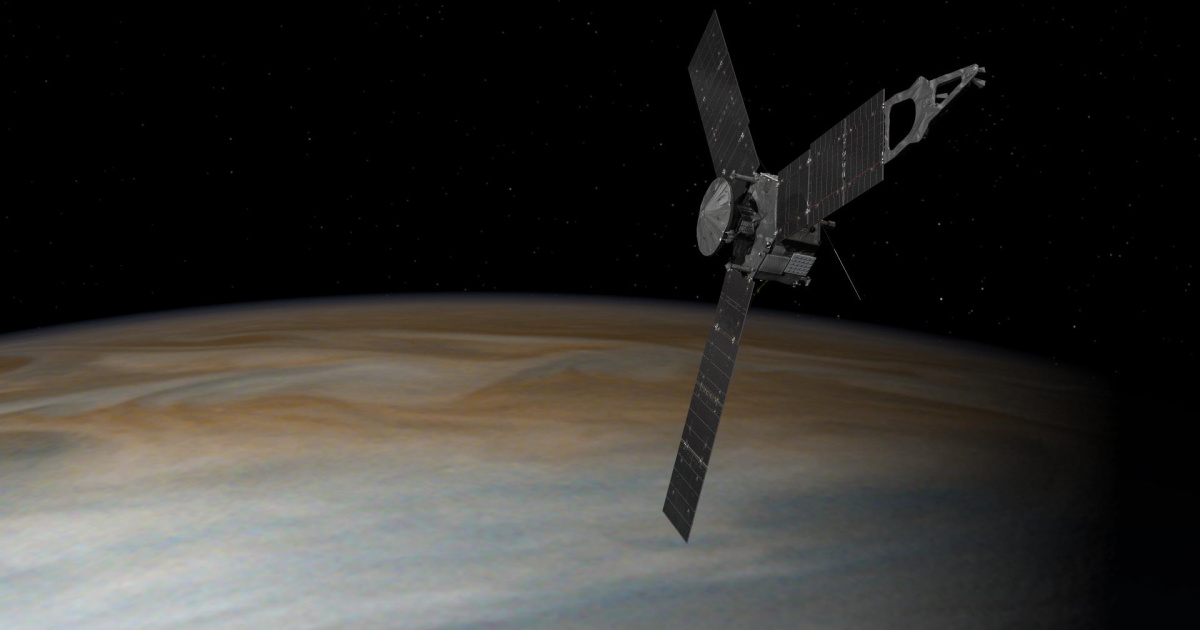
It seems lately like scientists are learning cool new things about our universe (and others) nearly every day.
Jupiter and Saturn have always been some of the coolest-looking and intriguing planets to laypeople – and now, scientists are coming through with some new information for us.
The data come from NASA’s Juno spacecraft, which entered Jupiter’s orbit in July of 2016. Since then, it’s mission has been to study the interior of the gas giant, which has been a mystery all this time.
Now, a series of four papers (1, 2, 3, 4) detail the spacecraft’s latest findings, and all address Jupiter’s key characteristics.
One big finding is that Jupiter’s atmosphere extends 1,860 miles down from the cloud tops – much larger than expected – and at that depth, the planet’s composition is quite different.
The interior of the planet appears to behave like a solid, even though in reality, it’s a mixture of hydrogen and helium that rotates like a solid body.
Yamila Miguel, one of the authors on the papers, explains more.
“Our results also show that below those winds of 3,000 kilometers, the planet rotates as a rigid body, and all this information has deep consequences in our understanding on the interior of the planet and in turn it allows us to get closer to understanding its formation.”
Another major finding is that Jupiter’s gravitational field is not symmetrical from north to south. This was unexpected, says Daniele Durante, another of the study’s authors, because it’s a rapidly rotating fluid planet.
“As the surface jets propagate deep into the planet, they produce a perturbation of the gravity field that we determined with Juno. That enabled us to infer the depth of Jupiter’s zonal jets, which has remained unknown until this day.”
The atmosphere contains 1% of the planet’s mass, equivalent to about three Earths, which is huge, says paper author Yohai Kaspi.
“The result is a surprise because this indicates that the atmosphere of Jupiter is massive and extends much deeper than we previously expected.”
Juno’s unique instrument set made all of these findings possible, because it had the ability to pass super close to Jupiter. The radio link between Juno and Earth allowed scientists to measure the spacecraft’s speed near Jupiter down to a 0.01 millimeters per second accuracy.
Luciano Iess, another author, says this was an amazing bit of information.
“This is one-hundredth the speed of a snail! To measure the gravity of Jupiter one needs to track how a test mass (the Juno spacecraft in our case) falls in the gravity field of the planet with respect to another point in space, such as the Earth.”
In the last paper, author Alberto Adriani say the observed the structure of Jupiter’s poles in infrared detail for the first time.
They found cyclones at the poles that created persistent polygonal patterns, with eight cyclones circling a central cyclone at the north pole.
At the south pole, five cyclones were doing the same thing.
“Juno is the first mission designed to give the instruments an outstanding view of the poles. The cyclonic structures we observed there, over the poles, do not exist in other planets of our solar system.”
And Juno isn’t done yet – the plan is to have it measure the tides affected by Io, a moon, as it exerts gravitational pull on the planet.
It’s also going to measure the depth and structure of Jupiter’s Great Red Spot.
And if you think this is cool, you’re going to be super excited for the release of data collected by Cassini as it orbited Saturn.
It should be coming later in 2024.
If you thought that was interesting, you might like to read about a second giant hole has opened up on the sun’s surface. Here’s what it means.